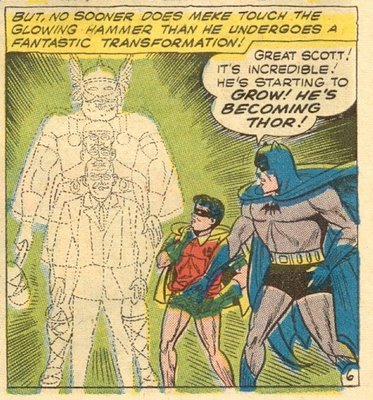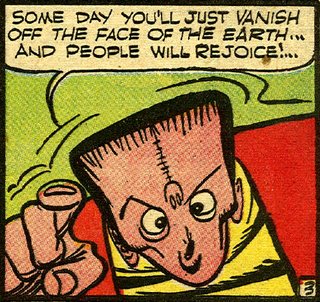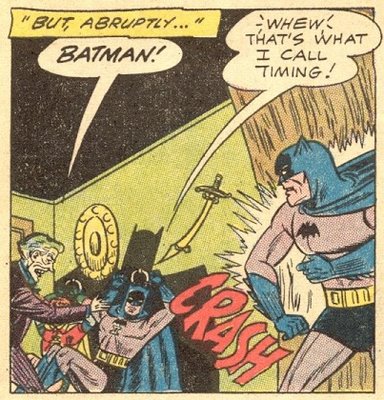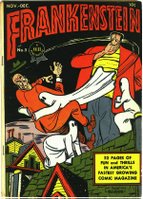One of the more interesting DC magazines of the Silver Age was the Brave & the Bold. The first issue hit the stands in Aug-Sept 1955. Perhaps inspired by the movie The Black Shield of Falworth, it featured the adventures of warriors from the past: The Golden Gladiator, the Viking Prince, and The Silent Knight. The features, drawn by Russ Heath, Joe Kubert and Irv Novick were terrific reads with some famed covers:
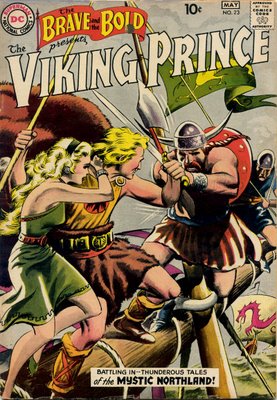
But after issue #24, DC decided to take the magazine in a new direction. Showcase, another DC magazine, had been churning out new characters (or revamps of old ones) on a regular basis. With issue #25, Brave & Bold became another tryout magazine for new features that DC hoped would catch on with the public.
The first effort was called the Suicide Squad, a Mission Impossible-type force that did not seem to catch on with young boys. After three issues, Brave and Bold came up with a winner as the 28th issue featured the Justice League of America. The JLA was an organization of superheroes, including (at first) Aquaman, Flash, the Martian Manhunter, Wonder Woman and Green Lantern. Batman and Superman were also members, but at first they were usually kept in the background, probably for fear they would dominate the group.
This series succeeded quite memorably, but oddly that turned out to be the exception rather than the rule. After three JLA tryouts, Brave & Bold tempted youngsters with Cave Carson's Adventures Inside Earth. No sale. Then came three issues of Hawkman drawn by one of his GA artists, Joe Kubert. These also failed to fly off the shelf, so DC came back with three more tryouts for the Suicide Squad. When the kids failed to drink the Kool-Aid, the Brave & the Bold went back for two more issues of Cave Carson, followed by three more of Hawkman.
None of those features graduated to headliner status. Particularly troubling to DC must have been the Hawkman failure; this was the first superhero mag put out by DC in the Silver Age which failed to catch on (although it did later after a third trial run in Mystery in Space).
Brave & Bold did try something different with #46-49: Strange Sports Stories. These were oddball adventures mixing science fiction with sports. Drawn by Carmine Infantino, they also included something unique; the narrative captions were given illustrations too:
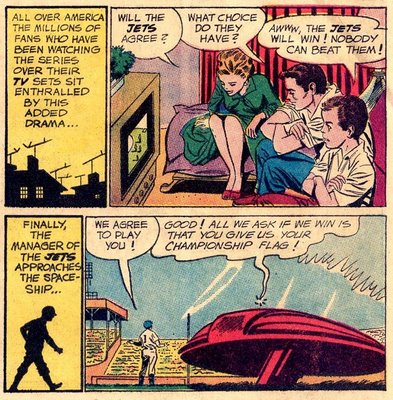
But once again, the sales did not justify creating a new title, so with #50 they again tried something different: A teamup of two of DC's existing superheroes, in this case the Martian Manhunter and Green Arrow. B&B #51 featured Aquaman and Hawkman. Then, in a surprise manuever, DC teamed up several of its top war comics features: Sgt. Rock, Johnny Cloud, and Jeb Stuart for #52; this was the first crossover for the war heroes, although there would be more. Issue #53 featured a teamup of the Atom and the Flash.
Finally, DC hit the jackpot again in B&B #54, with the Teen Titans (although they were not referred to as that in the story or cover). Kid Flash, Aqualad and Robin teamed up to help some of their fellow teenagers. There followed two more teamup issues before Metamorpho debuted in B&B #57 and #58. Batman hooked up with Green Lantern in #59, followed by another Teen Titans tryout.
In Brave & Bold #61 and #62, DC tried bringing back some more Golden Age heroes, with Starman and the Black Canary. Although the series did not take, the stories in those issues are particularly gorgeously drawn by Murphy Anderson and are well-worth reading.
B&B #63 features a meeting of Wonder Woman and Supergirl. The story concerns Supergirl's desire to be more like a normal girl. She decides to abandon fighting crooks in favor of being a fashion model in Paris, where she falls for a young Frenchman. Wonder Woman, dispatched by Superman to talk her out of it, finds herself enticed by the simple life. The story does reveal one major drawback of teamup stories. Because they are created by people other than their usual writers and editors, there are frequent goofs. For example, consider this embarrassing flub:
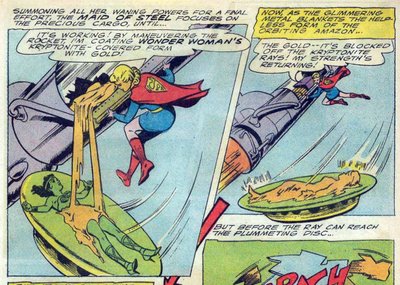
Of course, it was well-established in the Superman books that only lead could block Kryptonite radiation.
The next three issues featured more of the seemingly random teamups--Batman/Eclipso, Flash/Doom Patrol and Metamopho/Metal Men. By this point (mid-1966) it was obvious that the Batman show was a major hit, and for the next six issues (a full year), the teamups featured Batman and another DC character. Batman did not appear in B&B #72, which featured the Spectre and the Flash, or #73, with Aquaman and the Atom.
After that, though, the teamups always featured Batman, I believe all the way to #200, the final issue for this interesting title.


